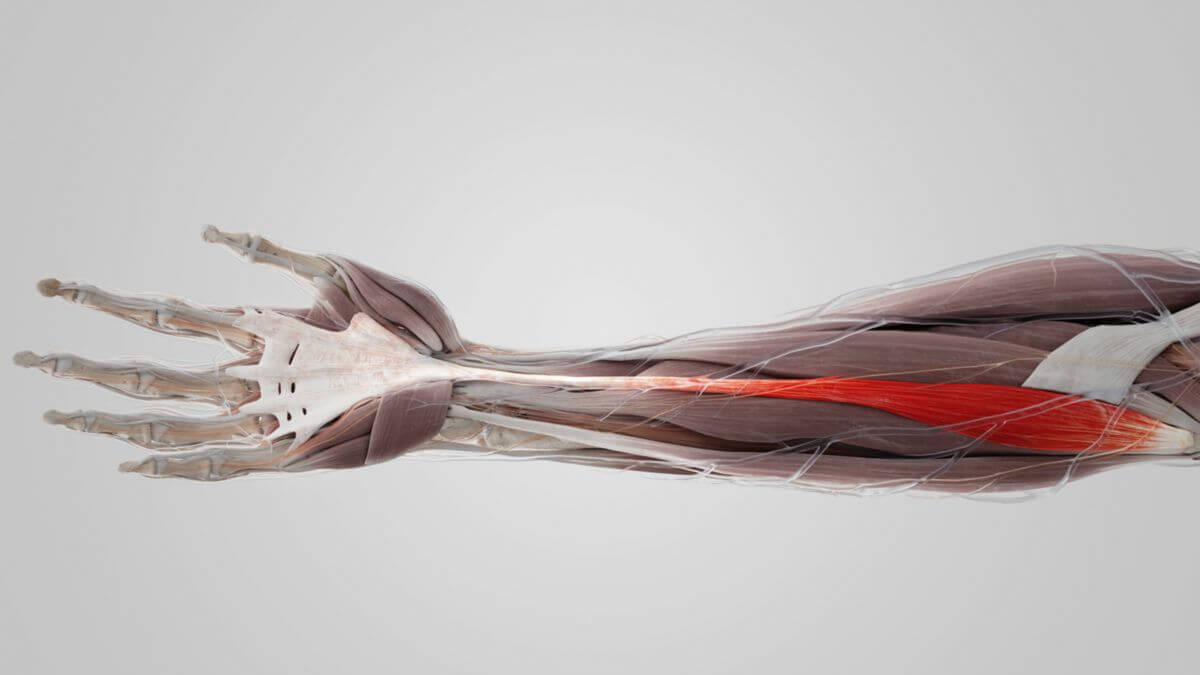Corpus: Palmaris longus muscle
1. Definition
2. Anatomy
2.1. Origin
The palmaris longus muscle originates from the medial epicondyle of the humerus — between the flexor carpi radialis and the flexor carpi ulnaris muscles — and from the antebrachial fascia.
2.2. Insertion
The muscle runs along the ulna towards distal and ends in a slender, flat tendon. Some fibers of the tendon attach to the transverse carpal ligament (flexor retinaculum), while others insert into the palmar aponeurosis. Unlike other flexor muscles of the hand, they run above the retinaculum.
3. Innervation
The innervation of the palmaris longus muscle is provided by the median nerve with fibers from segments C7 and C8.
4. Function
The palmaris longus muscle causes flexion at the wrist (palmar flexion) and tightens the palmar aponeurosis when the hand is clenched.
5. Variation
The palmaris longus muscle is absent in about 20 % of cases, either on one or both sides of the arm.
6. Clinic
The tendon of the palmaris longus muscle is often used as a tendon graft to reconstruct damaged flexor tendons of the fingers. This is because the removal of the tendon does not lead to significant functional limitations.



